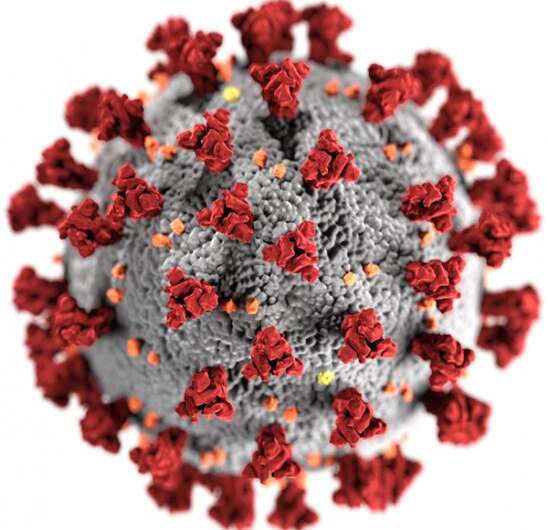Image of the ultrastructural morphology exhibited by the 2019 Novel Coronavirus (2019-nCoV). Credit: CDC
Scientists, biochemists and health experts have been working feverishly to find a cure for COVID-19, one of the most severe pandemics of our lifetimes.
This week, researchers announced a development that will allow the average person on the street to join in the battle.
Neocortix, a company specializing in creating supercomputers from a massive shared network of cellphones, announced Tuesday the release of support for ARM64, the architecture underpinning the majority of processors running today's cellphones. This means that users of tens of millions of Android phones, ARM-based servers and Raspberry Pi devices can use those resources to contribute to the effort to combat the coronavirus.
Users simply run an app that taps into their device's idling cycles to contribute to massive computational projects exploring the structure of coronavirus, predicting its trajectory and analyzing potential cures. The combined power of a massive army of personal devices exceeds the capabilities of virtually all of the most powerful computers today.
"As we head towards a world of a trillion connected devices, developer innovation is helping to tackle some of the world's most complex challenges from the endpoint and edge to the cloud," said Paul Williamson, an ARM vice president and general manager. "Arm-based technology can contribute spare compute capacity to critical COVID-19 research and it's incredible to see Arm's global developer ecosystem come together to support this effort."
Neocortix is working with two distributed computing power projects that are making inroads towards a cure. They have relied on shared computing to conduct their research, but until now they were restricted to volunteer parties using only non-ARM-based computational power.
Folding@home, based at Washington University in St. Louis, earlier this year uncovered novel protein structures that were previously not accessible to researchers. The research organization's web site explains how it utilizes the shared resources of participants:
"The project uses statistical simulation methodology that is a paradigm shift from traditional computing methods. As part of the client-server model network architecture, the volunteered machines each receive pieces of a simulation (work units), complete them, and return them to the project's database servers, where the units are compiled into an overall simulation. Volunteers can track their contributions on the Folding@home website, which makes volunteers' participation competitive and encourages long-term involvement."
The other distributed computing project is being conducted by Rosetta@home, established by the Baker Laboratory at the University of Washington. The group recently accurately predicted the atomic-scale structure of the SARS-CoV-2 (coronavirus) protein weeks before it was definitively measured in a laboratory setting. Thanks to a shared computational network consisting of more than 100,000 volunteer computers, the group also successfully created antiviral proteins that neutralize coronavirus and optimized antiviral drugs for animal testing trials.
"We've been watching the increasing computational power of phones and other mobile devices for years," said Greg Bowman, director of Folding@home. The expansion of research afforded by ARM64 support "provided the perfect opportunity to tap into these resources to accelerate our COVID-19 research."
All the average citizen with a cellphone has to do is fire up the Neocortix app, ideally during a period of low phone activity, and link into the massive computational network crunching massive numbers.
In fact, users can earn a little spare change. According to Neocortix, it will pay users up to $80 a year if they run the app while their phones charge for eight hours each night. If they have a spare phone they rarely use, leaving it on continuously while connected throughout the year can earn them $240.
The collaborative effort is reminiscent of the SETI@home project initiated in 1999. The founders of the project —SETI stands for Search for Extraterrestrial Intelligence—invited millions of users from 22 countries to link their personal computers to the then still-young internet and lend their machines' idle processing time to digest massive volumes of data collected by radio telescopes. The processing power was used mainly to distinguish vast stretches of digital noise in celestial images from needles in the haystack, potential sources of life situated amongst the stars. At its height, some 25 trillion calculations per second were achieved with the global computer network.
The 20-year project suspended operations earlier this year.
More information: neocortix.com/coronablog
© 2020 Science X Network
























